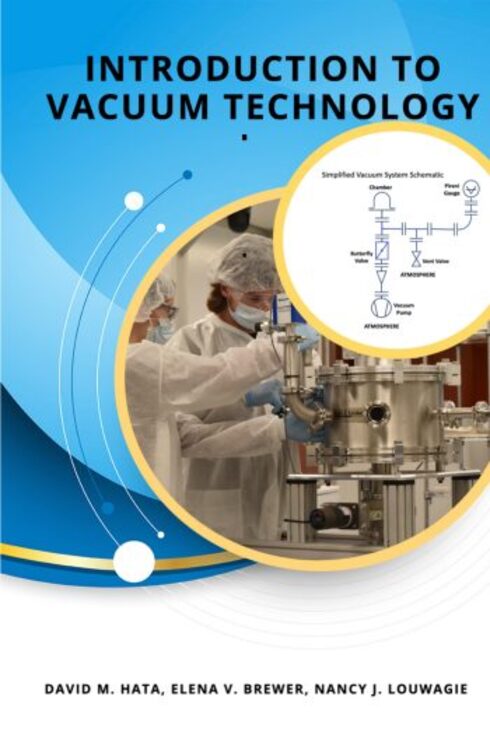
Introduction to Vacuum Technology
No ratings
David M. Hata, Portland Community College
Elena V. Brewer, SUNY Erie Community College
Nancy J. Louwagie, Normandale Community College
Copyright Year: 2023
ISBN 13: 9781942341963
Publisher: Milne Open Textbooks
Language: English
Formats Available
Conditions of Use
![]() Attribution-NonCommercial-ShareAlike
Attribution-NonCommercial-ShareAlike
CC BY-NC-SA
Table of Contents
- About This Book
- About The Authors
- Industry Testimonials
- Acknowledgements
- Chapter 1: Vacuum: An Enabling Technology
- Chapter 2: The Behavior of Gases
- Chapter 3: An Introduction to Vacuum Systems
- Chapter 4: Rough Vacuum Regime
- Glossary
- Index
Ancillary Material
About the Book
Vacuum systems are critical to many industries. They are vital to establishing required process pressures, establishing a clean process environment, and removing reaction by-products from the process chamber. This text, a revision and expansion of David Hata’s Introduction to Vacuum Technology published in 2008, addresses basic topics in vacuum technology for individuals tasked with maintaining vacuum systems and instructors teaching technician-level courses. The topics are carefully curated to the needs of technicians in a production environment and the types of vacuum systems used, and the accompanying laboratory manual and instructor’s guide support the delivery of lecture-laboratory courses.
This book approaches vacuum systems from a pressure regime viewpoint, covering basic vacuum science, followed by the rough vacuum regime, including gas load, pumping mechanisms, pressure measurement, vacuum system construction, and basic troubleshooting concepts. The study of high vacuum systems follows and the same topics are revisited, and finally the topics of leak detection and residual gas analysis are discussed.
About the Contributors
Authors
David M. Hata received his B.S. in Electrical Engineering from Washington State University and M.S. in Electrical Engineering from University of Washington. He has 32 years of experience teaching Electronic Engineering Technology and Microelectronics Technology at Portland Community College (PCC) in Oregon. He has taught technician-level courses on vacuum and plasma technology, authored Introduction to Vacuum Technology, published by Pearson Prentice Hall in 2008, and implemented a vacuum/plasma teaching laboratory at PCC. Although he is retired from teaching, he continues to impact technician education as a consultant and external evaluator for NSF ATE projects at community colleges around the country.
Elena V. Brewer received her B.S. in Physics from Irkutsk State University and PhD in Physics from University at Buffalo. She has over 20 years of experience teaching Electrical Engineering Technology, Nanotechnology, Renewable Energy and Physics courses at SUNY Erie Community College (SUNY ECC), as well as Physics at the University at Buffalo. She has substantial experience in program/course development at SUNY ECC and was instrumental in starting Nanotechnology program at this institution.
Nancy J. Louwagie received her B.S. in Electrical and Electronics Engineering from North Dakota State University and M.S. in Electrical Engineering from the University of Minnesota. She has 18 years of industry experience and over 15 years of teaching Engineering Technology and Vacuum Technology courses at Normandale Community College. She is currently the Chair of the Engineering Technology Programs Department at Normandale. She served as the co-Principal Investigator (co-PI) on the NSF-ATE DUE #1400406 project and subsequently as the PI on NSF-ATE DUE #1700624 project. These projects focused on revisions to the core vacuum technology courses in Normandale’s Vacuum and Thin Film Technology program so that vacuum technology classes could be delivered in a telepresence classroom venue and offered to students who attend and participate in these classes at remote locations.
